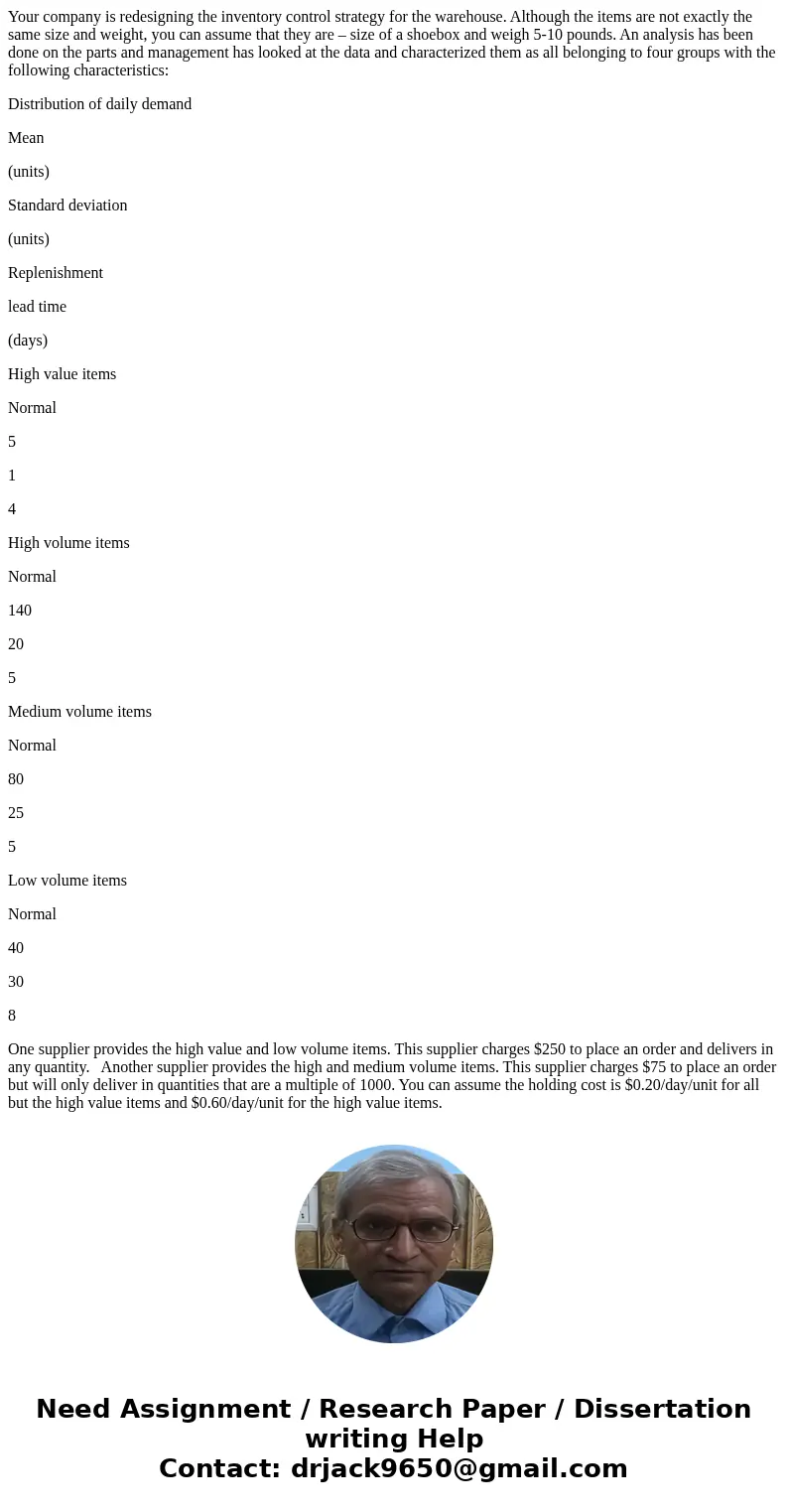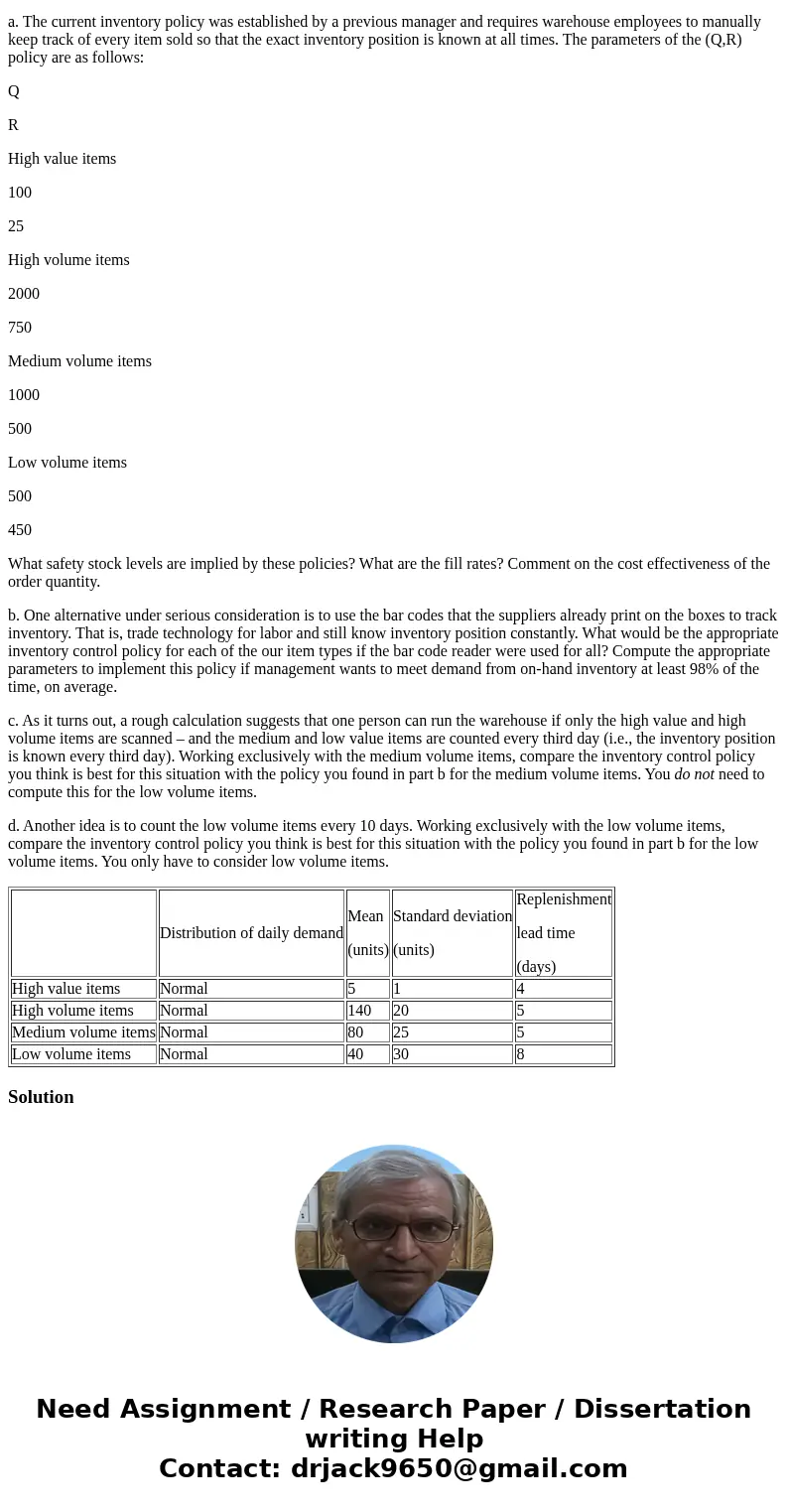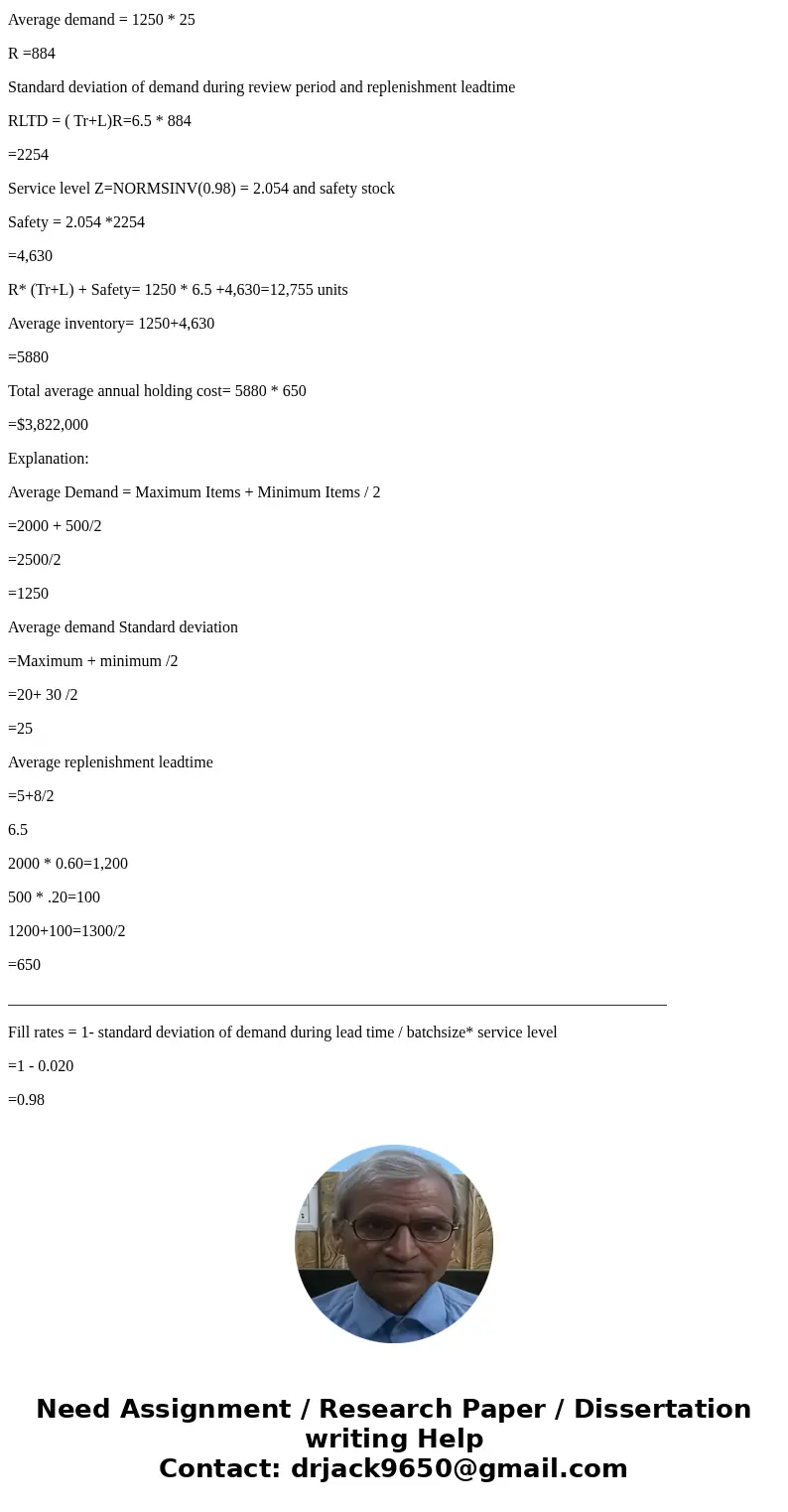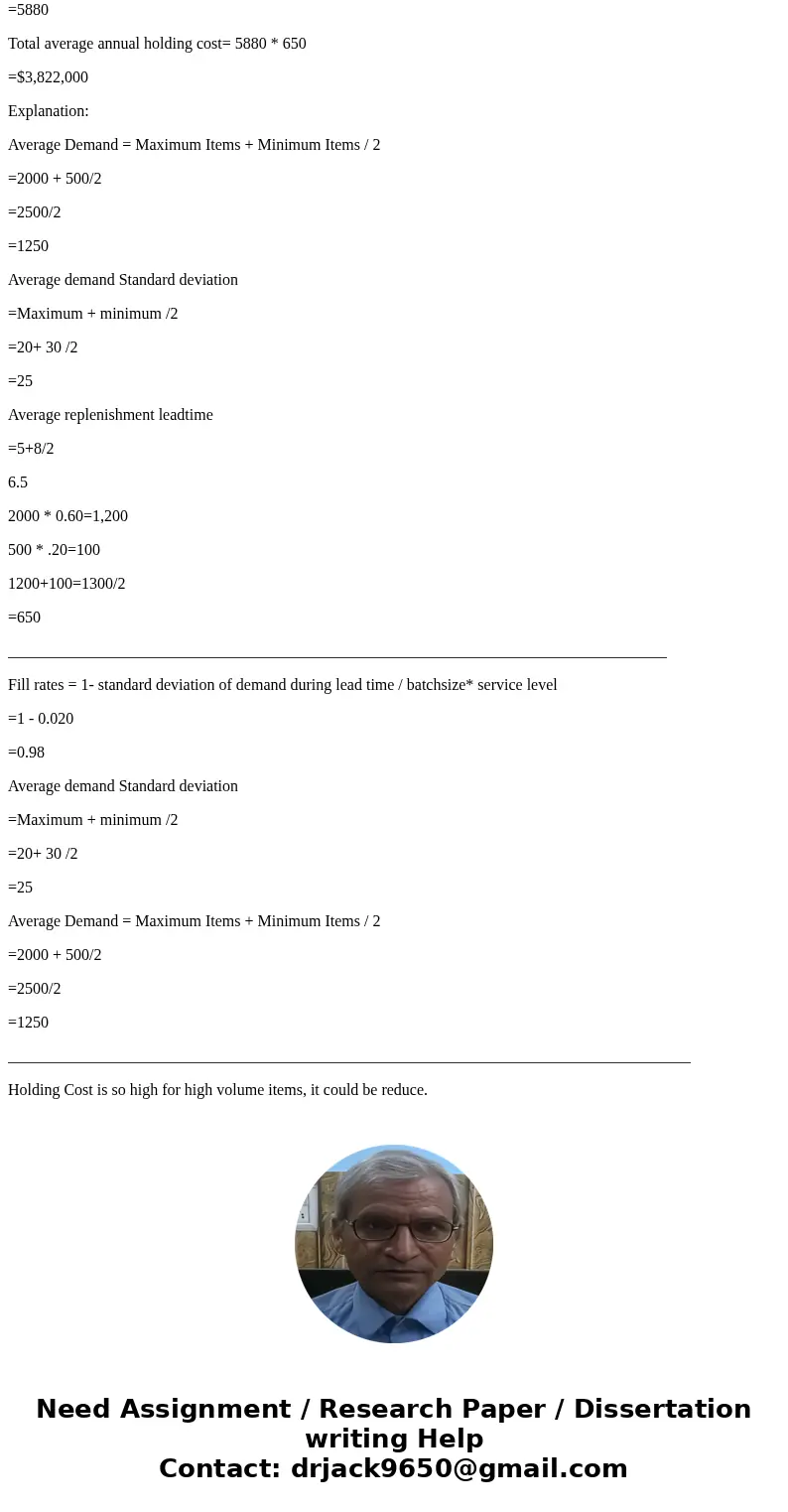Your company is redesigning the inventory control strategy f
Your company is redesigning the inventory control strategy for the warehouse. Although the items are not exactly the same size and weight, you can assume that they are – size of a shoebox and weigh 5-10 pounds. An analysis has been done on the parts and management has looked at the data and characterized them as all belonging to four groups with the following characteristics:
Distribution of daily demand
Mean
(units)
Standard deviation
(units)
Replenishment
lead time
(days)
High value items
Normal
5
1
4
High volume items
Normal
140
20
5
Medium volume items
Normal
80
25
5
Low volume items
Normal
40
30
8
One supplier provides the high value and low volume items. This supplier charges $250 to place an order and delivers in any quantity. Another supplier provides the high and medium volume items. This supplier charges $75 to place an order but will only deliver in quantities that are a multiple of 1000. You can assume the holding cost is $0.20/day/unit for all but the high value items and $0.60/day/unit for the high value items.
a. The current inventory policy was established by a previous manager and requires warehouse employees to manually keep track of every item sold so that the exact inventory position is known at all times. The parameters of the (Q,R) policy are as follows:
Q
R
High value items
100
25
High volume items
2000
750
Medium volume items
1000
500
Low volume items
500
450
What safety stock levels are implied by these policies? What are the fill rates? Comment on the cost effectiveness of the order quantity.
b. One alternative under serious consideration is to use the bar codes that the suppliers already print on the boxes to track inventory. That is, trade technology for labor and still know inventory position constantly. What would be the appropriate inventory control policy for each of the our item types if the bar code reader were used for all? Compute the appropriate parameters to implement this policy if management wants to meet demand from on-hand inventory at least 98% of the time, on average.
c. As it turns out, a rough calculation suggests that one person can run the warehouse if only the high value and high volume items are scanned – and the medium and low value items are counted every third day (i.e., the inventory position is known every third day). Working exclusively with the medium volume items, compare the inventory control policy you think is best for this situation with the policy you found in part b for the medium volume items. You do not need to compute this for the low volume items.
d. Another idea is to count the low volume items every 10 days. Working exclusively with the low volume items, compare the inventory control policy you think is best for this situation with the policy you found in part b for the low volume items. You only have to consider low volume items.
| Distribution of daily demand | Mean (units) | Standard deviation (units) | Replenishment lead time (days) | |
| High value items | Normal | 5 | 1 | 4 |
| High volume items | Normal | 140 | 20 | 5 |
| Medium volume items | Normal | 80 | 25 | 5 |
| Low volume items | Normal | 40 | 30 | 8 |
Solution
Average demand = 1250 * 25
R =884
Standard deviation of demand during review period and replenishment leadtime
RLTD = ( Tr+L)R=6.5 * 884
=2254
Service level Z=NORMSINV(0.98) = 2.054 and safety stock
Safety = 2.054 *2254
=4,630
R* (Tr+L) + Safety= 1250 * 6.5 +4,630=12,755 units
Average inventory= 1250+4,630
=5880
Total average annual holding cost= 5880 * 650
=$3,822,000
Explanation:
Average Demand = Maximum Items + Minimum Items / 2
=2000 + 500/2
=2500/2
=1250
Average demand Standard deviation
=Maximum + minimum /2
=20+ 30 /2
=25
Average replenishment leadtime
=5+8/2
6.5
2000 * 0.60=1,200
500 * .20=100
1200+100=1300/2
=650
___________________________________________________________________________________
Fill rates = 1- standard deviation of demand during lead time / batchsize* service level
=1 - 0.020
=0.98
Average demand Standard deviation
=Maximum + minimum /2
=20+ 30 /2
=25
Average Demand = Maximum Items + Minimum Items / 2
=2000 + 500/2
=2500/2
=1250
______________________________________________________________________________________
Holding Cost is so high for high volume items, it could be reduce.




 Homework Sourse
Homework Sourse